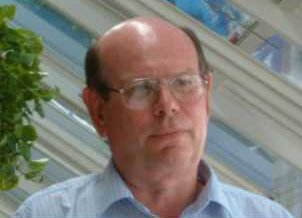 |
| The Holiday Inn, a haven for journalists during the war |
Travel Dates 31st May - 2nd June 2011.
Click on any picture to see a larger version.
Click on any picture to see a larger version.
I have let too many old trips slide into obscurity without recording them. The next few posts will conclude my 2011 trip to Europe and Russia. After that I will add my 2008 trip to Mexico, which was part of the 'round-the-world trip at that time; it follows this past post on Egypt. I hope to add several nostalgia posts on past trips to the USA ('03, '06, '08, '10), Canada '06 and the UK ('03, '06, '08, '11) after that. Possibly I might slip Fiji '05 and New Zealand '06 in the midst of those.
This post follows this earlier report: Mostar to Sarajevo By Train.
This impressive new building near the railway station was an indicator that the city was rebuilding after the terrible Balkan wars.
I took a cab from the station to the hotel I had reserved by internet based on tripadvisor reviews, but decided it was grossly over-priced. I cancelled on arrival (luckily I had not paid in advance) and strolled around the district. I quickly found the ETN hotel for half the price with better facilities. It had one rather strange feature: a full-size automobile lift in the lobby. I did not have a vehicle but it was also used as the passenger lift to higher floors.
The hotel was in Safet-Bega Basagica street a hundred metres from a major tram stop on Mula Mustafe Bašeskije street which made access to most of the older section of Sarajevo very simple. I bought a cheap daily tram pass each morning then wandered where the trams went. The district was hilly but not too steep and not far from the river.
Just across from the tram stop was a small shopping square which became a permanent market as I walked deeper into it.
I was very interested in the history of the war and went looking for the museum dedicated to it. The museum was surprisingly hard to find, partly because none of the locals I asked for directions appeared to know about it, or did not want to discuss it. It is in this nondescript building with no signs on the front. The direction sign in the street sent me off on a walk through a nearby park until I realised the arrow was misleading.
I was almost alone in the museum, with occasional visitors arriving but not staying long. I can understand; the pictures and stories are horrifying and depressing but I believe visiting places like this remind us of the folly of war. Every politician should be required to visit this museum, Auschwitz, the many WWI and WWII graveyards in Belgium and France and the many other reminders of past horrors around the world. Maybe then they would be a little less prone to going to war. Yes, I know, a forlorn wish, but if only it could be true. Photographs were not allowed, but as I was alone I sneaked these small samples of the display.
After the museum I walked up the road to the famous Holiday Inn. It still bears some scars from the war.
I had an over-priced beer in the bar for the atmosphere but it slipped by; it was just another beer in just another four-star American-style hotel bar. I headed back downtown to the real Sarajevo.
The daytime and evening café culture was similar to Croatia. I do not know if the majority of the population are independently wealthy or just unemployed but most of them, especially males from teens to middle-aged, filled the cafés, sipping coffee and chatting, almost all day and well into the evening.
I like to take local buses, not knowing where they go, to see a little of the town outside the central and tourist districts. At the end of the line I get off, have a meal and hopefully find a bus heading back to the centre. This lunch was somewhere in the outer suburbs.
I enjoyed wandering along both sides of the river for long walks. As I walked the pleasant views of the surrounding hills took on a new meaning when occasional scars of battle reminded me that those hills were used as gun emplacements to shell the inhabitants.
I tried these delicious snacks as a light lunch. They are similar to our sausage rolls but much lighter in texture. The filling is minced meat and vegetables with some spices in a puff pastry.
This old site reminded me that Bosnia is one of the oldest settled areas in Europe. The thin bricks imply a Roman presence, but I suspect some parts are much older than that.
Down-town is like any other modern European city.
I enjoyed my brief stay, but I found it impossible not to reflect on how easily this region descended into savagery so recently, and how often the Balkan region has been fought over in history. I left feeling sad, as I will never understand why that happens so often in Europe.
Cheers, Alan








































































